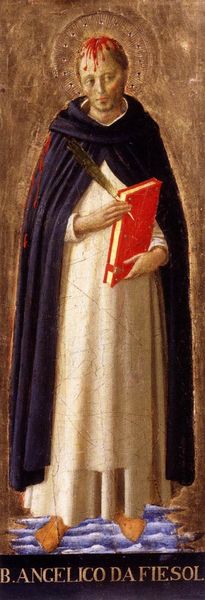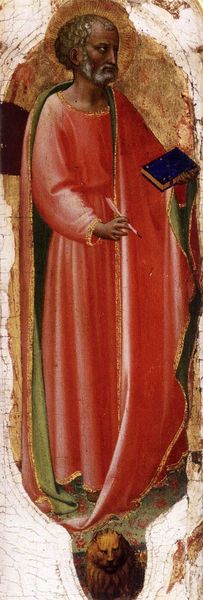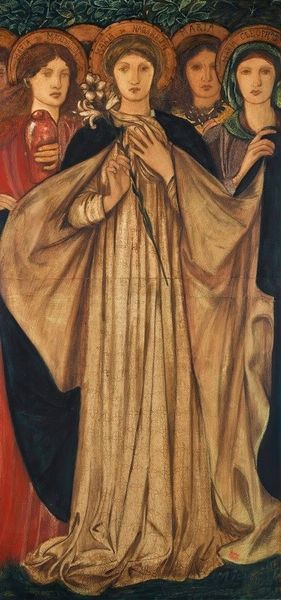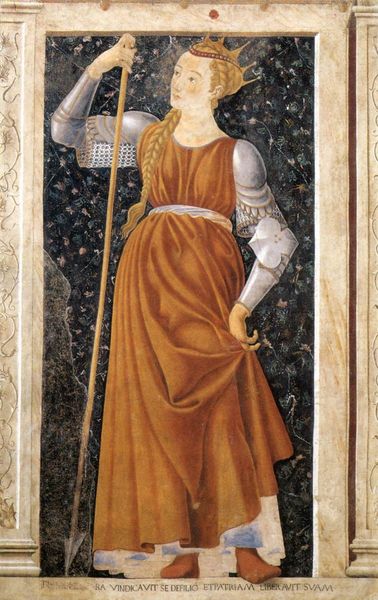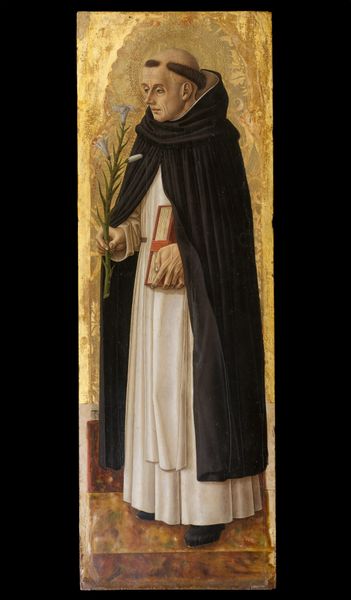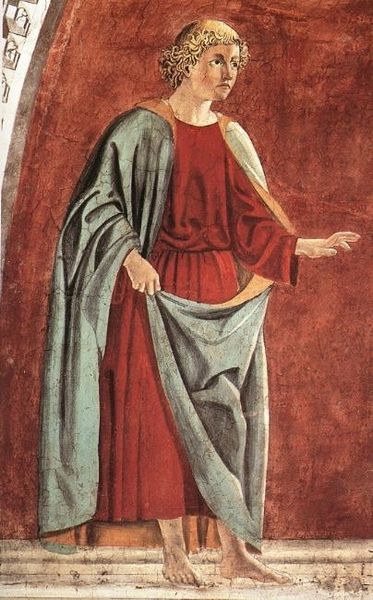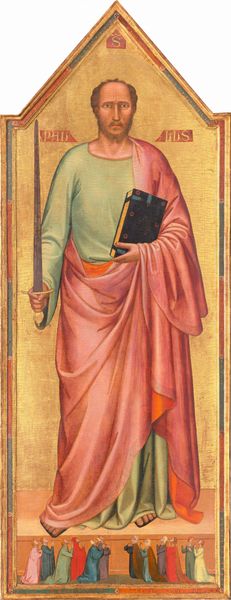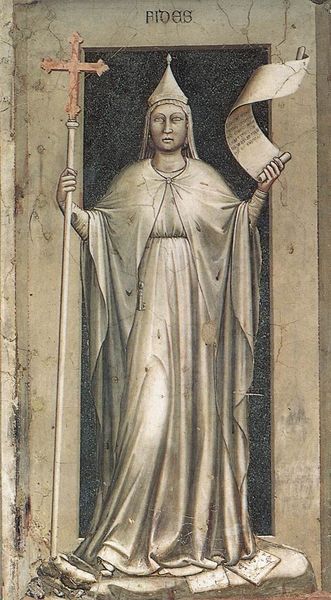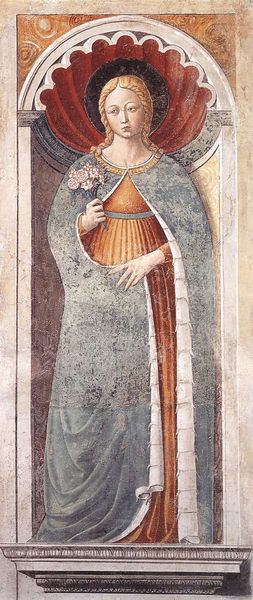
tempera, painting
#
portrait
#
tempera
#
painting
#
figuration
#
oil painting
#
christianity
#
men
#
history-painting
#
academic-art
#
italian-renaissance
#
early-renaissance
#
portrait art
#
watercolor
#
christ
Copyright: Public domain
Fra Angelico painted this image of St. Thomas Aquinas in Italy sometime before 1455, likely with tempera on a wood panel. The materials themselves carry meaning. Tempera, made from pigment mixed with egg yolk, was a common medium at the time. It allowed for bright, detailed work, but required patience and skill. The gold leaf background, too, speaks to the value placed on the subject. Consider the labor involved in preparing these materials – grinding pigments, carefully applying gold – a testament to the dedication required to produce such an image. The way St. Thomas is depicted, holding a quill and book, reminds us of the vital role that handcraft played in the production of knowledge at that time. The act of writing was a physical, painstaking process and this panel serves as a reminder of the labor and materials involved in the transmission of ideas, before the age of mechanical reproduction. By considering these elements, we can gain a deeper appreciation for the historical context in which this work was created.
Comments
No comments
Be the first to comment and join the conversation on the ultimate creative platform.
